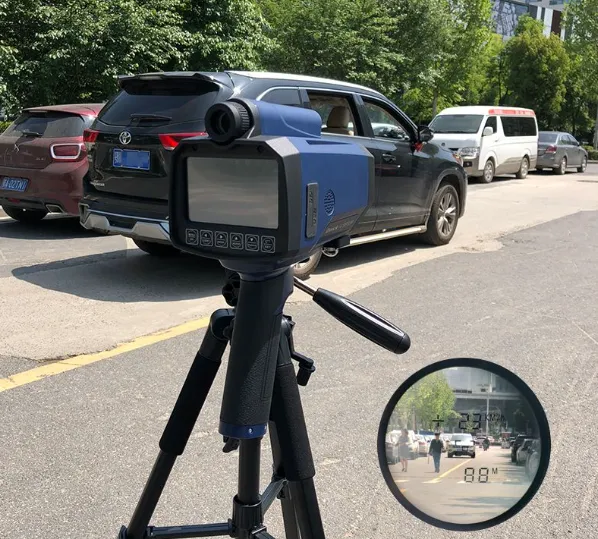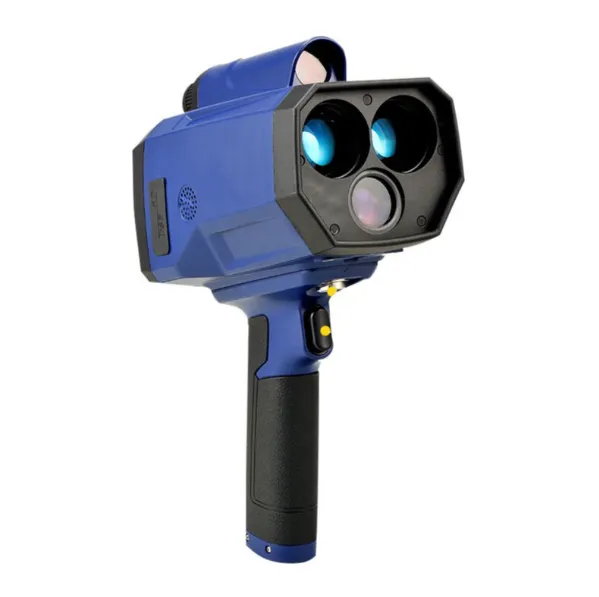What is the difference between a handheld speed meter and a handheld speed gun?
In situations like traffic enforcement and sporting events, we often see devices used to measure speed. Handheld speed guns and handheld speed guns are the most common. While they function similarly, both measure the speed of an object, they differ in many ways.

Differences in Principle
Handheld speed guns use a variety of principles. Common ones include radar speed guns, which utilize the Doppler effect to transmit radar waves at a moving object and calculate the object's speed by detecting changes in the frequency of the reflected waves. Laser speed guns also use the same principle: they measure the time difference between the laser's emission and its reflection from the object, then use the speed of light to calculate the change in distance between the object and the speed gun, thereby determining the speed. For example, radar speed guns placed by traffic police on the roadside use radar waves to measure the speed of passing vehicles. At some sporting events, laser speed guns are used to measure the speed of athletes throwing or hitting a ball.
Handheld speed guns typically use the same radar principle as handheld radar speed guns, emitting radar waves of a specific frequency and calculating the target's speed based on the Doppler frequency shift of the reflected waves. However, the radar technology used in handheld speed guns is more focused on quickly and accurately targeting a single target for speed measurement. In traffic enforcement, traffic police can quickly aim a handheld speed gun at a specific vehicle to check its speed. In sports training, coaches use speed guns to measure athletes' speeds at the moment of serving or hitting a ball.
Appearance Design Differences
Handheld speed guns are generally larger, rectangular or similar in shape. They typically feature a large display that clearly displays various information, including speed readings, measurement mode, and battery level. Operation buttons are located on the side or top, allowing users to easily switch measurement modes and set parameters. Some handheld speed guns used for industrial inspections are larger and more rugged, suitable for complex working environments. Some handheld speed guns used in high-end sporting events feature ergonomic design and a well-organized button layout for easy operation.
Handheld speed guns: Resembling a pistol, they are compact and easy to hold and quickly aim at a target. The trigger is usually located at the speed trigger, which activates the speed measurement. The display is relatively small, but the speed reading is prominently displayed, providing a concise and clear display. Common handheld speed guns used by traffic police are compact and easy to carry and operate. Speed guns used by coaches at sports events also feature a pistol-like design, making them convenient for quickly capturing athletes' movements from the sidelines.

Various Speed Ranges and Accuracy
Handheld speed guns offer a wide speed range, ranging from a few kilometers per hour to hundreds of kilometers per hour, or even higher, depending on the model and application. They offer high accuracy, typically reaching ±1 km/h or better. In the transportation sector, they can measure the speed of low-speed vehicles on urban roads and accurately measure the speed of high-speed vehicles on highways. In industrial production, they can precisely measure the speeds of moving objects such as conveyor belts and mechanical components.
Handheld speed guns also offer a wide speed range, but some models may not measure very high speeds as well as professional handheld speed guns. Their accuracy is also high, meeting most traffic enforcement and sporting needs, typically reaching ±1-2 km/h. In traffic enforcement, handheld speedometers can effectively monitor vehicle speeds on urban roads and highways. In sports, they can accurately measure common athletic speeds, such as baseball pitching and tennis serve speeds.
Each application scenario has its own focus
Handheld speedometers: In the transportation sector, in addition to being used by traffic police for mobile speed measurement, they are also commonly used to assist with speed measurement on expressways and collect data at traffic flow monitoring points. In industrial production, they are used to measure conveyor belt speeds and the speed of moving machinery components to ensure the smooth operation of production processes. In sporting events, they can measure the speeds of various sports, such as track and field athletes' sprints and racing. In assisting with speed measurement on expressways, multi-point measurements provide data for calculating average vehicle speeds. On industrial production lines, they monitor equipment speeds in real time to ensure consistent product quality.

Handheld speed guns: Primarily used in traffic enforcement, traffic police can quickly measure speeds of vehicles on the roadside or from inside vehicles, enabling them to promptly investigate and punish speeding offenders. In sports training and competitions, coaches use them to measure the instantaneous speeds of athletes' serves and strikes, providing data support for training and tactical planning. In traffic law enforcement, it allows traffic police to flexibly respond to different road conditions and vehicle situations to measure speed; in sports training, it allows coaches to quickly obtain speed data of athletes' technical movements and adjust training plans accordingly.





















